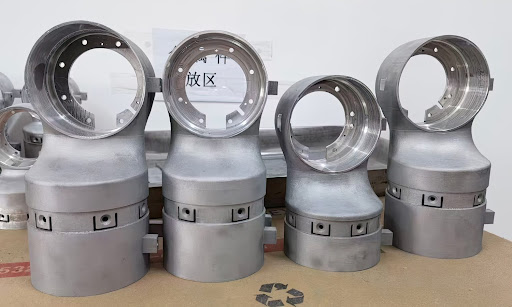In the era of manufacturing automation, 3D printing has extensively transformed the production process. With the increasing sophistication of this additive manufacturing technology, today, materials other than plastics, resins, and ceramics are also used in 3D printing. We are specifically speaking of metals. Yes! A wide array of metals can be 3D printed into tangible objects.
From small companies to large industries, metal 3D printing is widely preferred for mass production. You can witness its extensive implementation in industries like automotive, aerospace, consumer products, and healthcare. In other words, 3D printing services have revolutionized the production process. Rapid prototyping or end-use products- 3D printing in metals have dominated the manufacturing sector.
Why is metal 3D printing in rising demand? How does it aid mass production? Let’s understand it in detail.
Common Metal 3D Printing Processes
Powder bed fusion (PBF), fused deposition modeling (FDM), directed energy deposition (DED), and binder jetting are the preferred metal 3D printing processes applied across diverse manufacturing sectors. Here is a brief guide to these technologies.
- Powder Bed Fusion (PBF)
The powder bed fusion technology can be subdivided into three types- selective laser sintering (SLS), direct metal laser sintering (DMLS), and selective laser melting (SLM). PBF works on the principle of melting and fusing metal powder using a powerful laser beam. It produces highly precise parts with a smooth surface finish.
- Fused Deposition Modeling (FDM)
In fused deposition modeling, metal and thermoplastic materials are drawn into a filament which is heated and extruded on the build platform of the printer. As the process completes, the object is sintered to burn the thermoplastic material. Now, you get a complete metal object that can be best used as a prototype.
- Directed Energy Deposition (DED)
Directed energy deposition is pretty similar to powder bed fusion, except the deposition and fusing of metal powder or wire take place at the same time. In DED, the energy source can be a laser beam, electron beam, or plasma arc. Directed energy deposition is a fast 3D printing technology that produces highly accurate parts ideal for end use. Additionally, material wastage is minimal.
- Binder Jetting
In this process, a fusing agent is selectively applied over a fine layer of powdered metal. The object is created layer by layer. On completion, the final product is placed in a sintering furnace to burn out the fusing agent. A wide range of metals can be used in binder jetting with precise results.
How Does Metal 3D Printing Enable Mass Production?
Metal 3D printing is undeniably the need of the hour when the demand for high-quality parts and prototypes is on the rise! It proposes numerous advantages, making way for a breakthrough production process. Check out the factors of how mass production has become more convenient with metal 3D printing:
- Quick Processing- The turnaround time in metal 3D printing is much less compared to other manufacturing processes. It means you can deliver a large quantity of products within a shorter time. For businesses, production time matters a lot as it is accountable to profitability. The less the processing time, the more profit!
- Endless Customization- Since the aluminum 3D printing service is entirely automated, it allows limitless design customization. From intricate geometries to diverse surface finishes, 3D printing allows you to explore an extensive scope for customization. Additionally, you can experiment with diverse metals to ensure the highest level of performance and sustainability.
- Improved Adaptability- The specialized machines in 3D printing enable you to identify design flaws in the early stages. It is possible to make alterations or upgrade product design without hard tooling. Designers can instantly make changes without interrupting the production cycle. As a result, the manufacturing process is faster, easier, and convenient.
- Superior Accuracy- If you are worried about product quality, let’s say put a pause on it! The products possess exceptional dimensional accuracy irrespective of design complexities. No matter how intricate is the geometry, you receive immensely precise products complying with the highest quality standards.
- Affordable- Another significant benefit of the metal 3D printing service is that it is a cost-effective technology because you do not require hard tooling and a huge team of labors. Also, in most cases, there is no need for post-processing. What can be better than this for mass production?
- Low Wastage- Excess raw materials can be readily reused. Thus, there is minimal waste production, curtailing resource consumption and encouraging a greener environment. Metal 3D printing is an eco-friendly manufacturing technology which is undoubtedly a substantial advantage!
Conclusion
Quality, consistency, scalability, and affordability are the fundamental factors affecting mass production. Thankfully, metal 3D printing ticks all the boxes! You have a production process which is efficient, reliable, and highly sophisticated. With the growing advancements, we are on the way to making a new industrial revolution!
